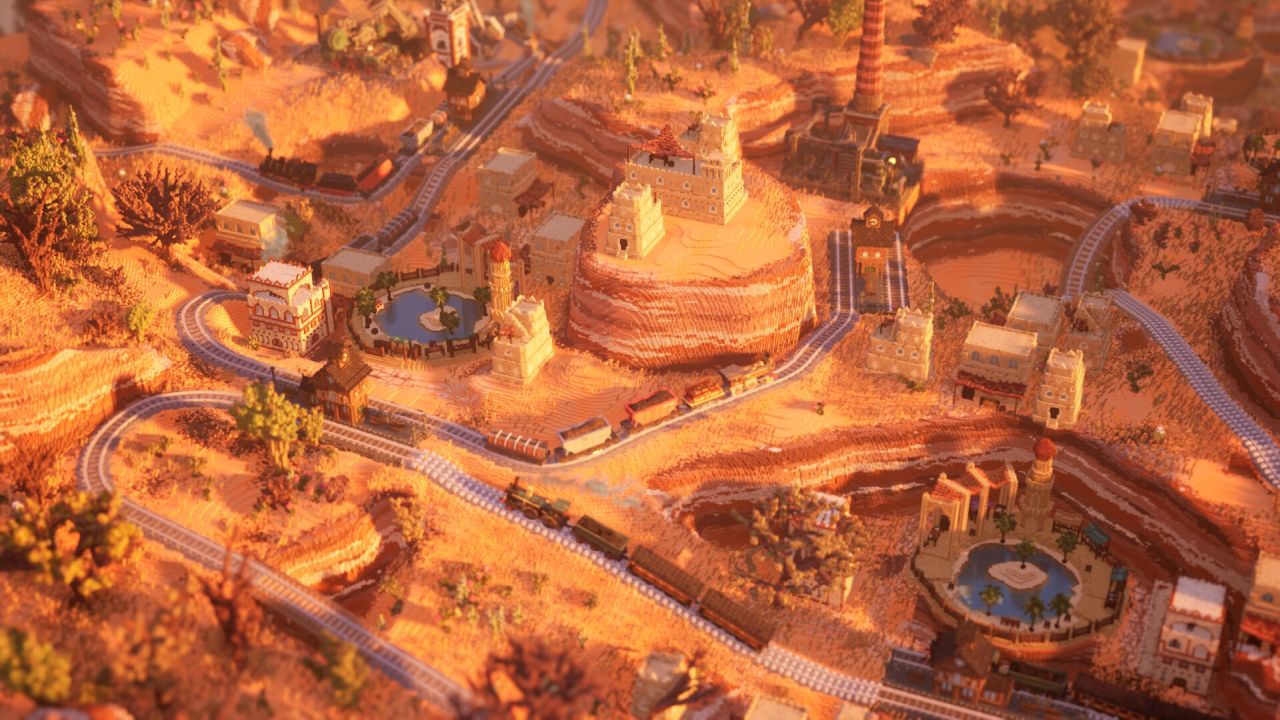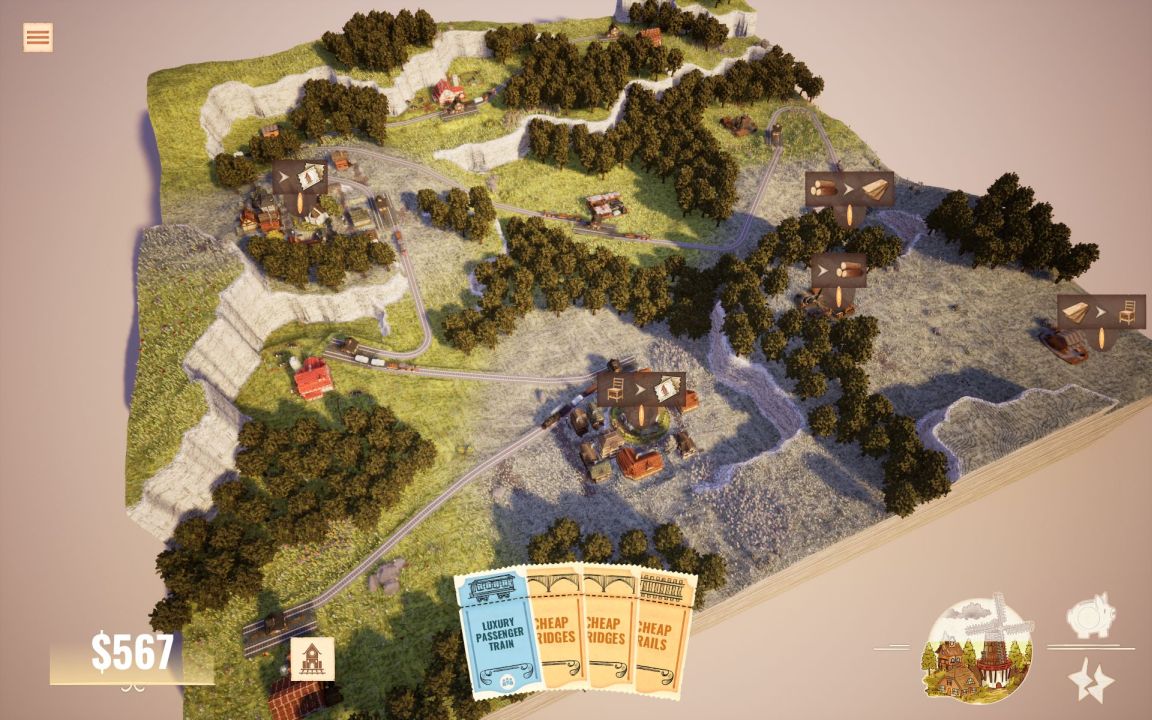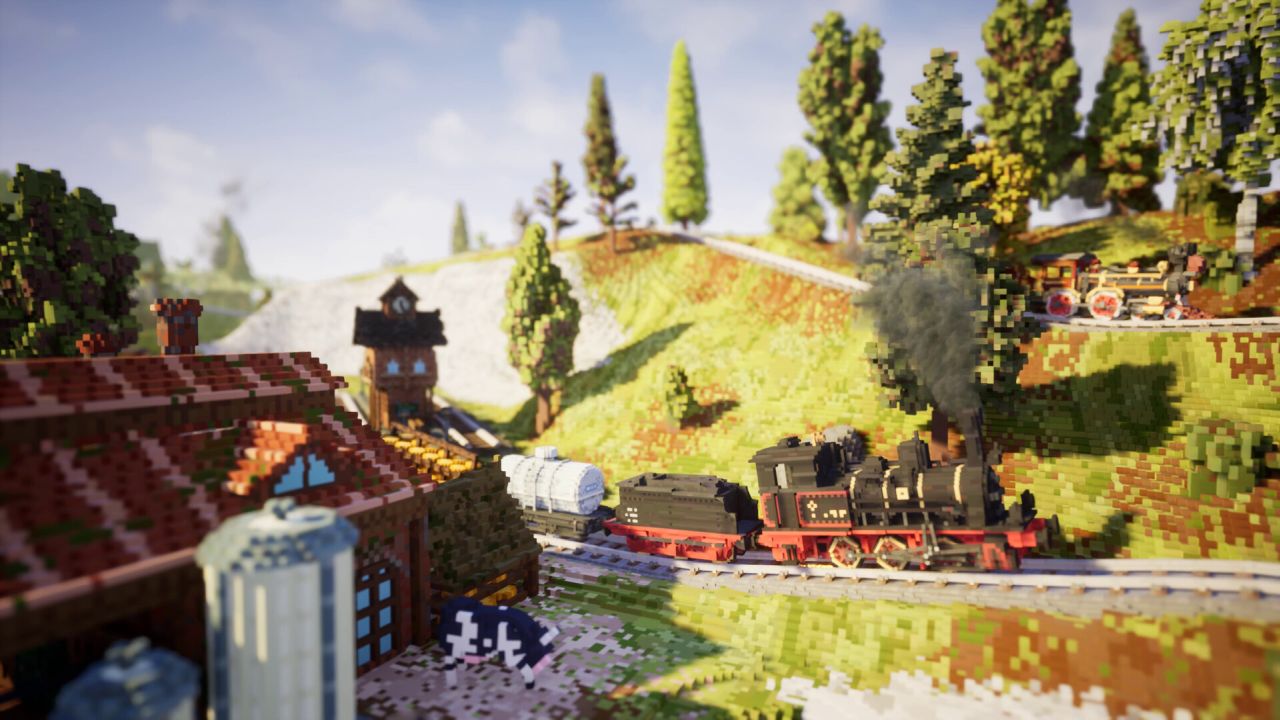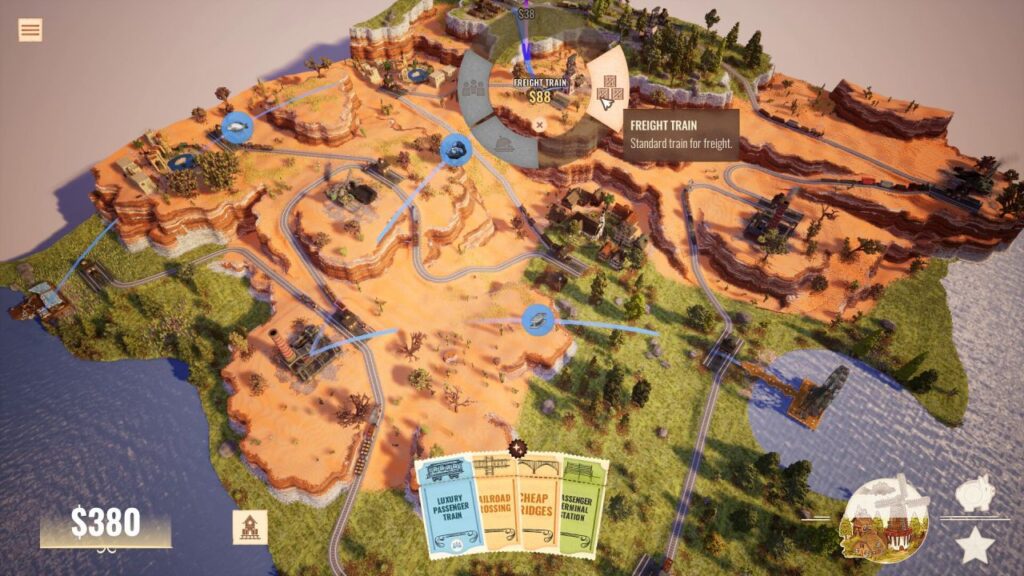Puzzle games come in many different formats. Some require advance planning, while others present a complete set of elements and can be solved at your own pace. The recently released 3D puzzle game Station to Station is a combination of sorts. Players can interconnect buildings across a series of maps, but within each map new endpoints are constantly introduced that can affect your plans. These dynamics can lead to both triumphs and setbacks, but for the most part, the titles are thought-provoking and entertaining. This is what most puzzle games should strive for.
The campaign design follows the familiar setting of modern light puzzle games. There are six chapters, each focusing on a different biome and challenge set, and containing about five or so individual levels. Progression between levels is linear, but later chapters can take you in multiple directions. Similarly, earning enough stars unlocks new chapters, and at the halfway point there are several chapters to choose from. Still, it’s probably the most effective method given that it’s a mostly linear progression curve, with mechanics and difficulty evolving gradually over time.
The levels themselves appear as the typical abstract land parcels found in many puzzle games, and the game generates terrain and buildings based on them that need to be connected. Several buildings are generated in the game and the player needs to connect them to transport goods. Click to place the station anywhere within a small radius of the building and rotate it freely. The station has four rail terminations, so you can plan in advance which direction to go to reduce future rail costs. Once you have placed the two stations, click and drag the railway line between them. Once connected, your items will be transferred automatically and instantly and you may earn a cash bonus to use towards your next track. All of this happens automatically. This is not a management or strategy game of any kind. Your cash is set and only changes as you progress through the levels by connecting buildings and spending on further construction. It doesn’t flow even after time passes. You will see trains running, but they are just a visual decoration.
The game can automatically create direct paths between stations over any terrain, but one important aspect is carefully routing rails around obstacles to reduce costs. Otherwise, you will run out of money and will not be able to complete it. level. Players can lower prices by manually clicking on the terrain to lay tracks section by section, creating carefully chosen paths that take advantage of natural slopes and avoid the need for bridges and railroad crossings. . Although the distance is longer, it is more cost-effective. Later levels also introduce elements such as forests, which are also expensive to clear and railroad through.

Another major mechanic is the card system. During the course of the levels, the game gives you one-time cards that you can use. These cards affect the following tracks, such as reducing the cost of basic rails, reducing the cost of bridges, or running special trains on that section to increase revenue bonuses. The use of these bonuses will be very important later in the campaign. Otherwise, you can easily run out of cash before all the buildings on the map are connected and the level is complete. The first half of the campaign is fun and intuitive, clicking and placing tracks, connecting stations, and watching the train start moving. It’s not particularly difficult and the levels don’t take long to complete.
However, there are several mechanics that make things more complicated later on. Each level starts with only a few buildings that need to be connected to each other. These buildings are either industrial or urban. Industries range from furniture and tool manufacturing to cheese and fish production. Some buildings produce raw materials, while others consume them and create something new. Thankfully, there is no need to interconnect each building to the rest of the buildings in the mesh. To move items, it is enough to simply create rails that connect them. However, even if you have a large rail network, the material will be used on the first building in the path. Later levels have a large number of different building locations that need to be interconnected throughout the map. Therefore, you need to decide whether to create a large railway line that will surround everything. This will be almost impossible without him placing an additional station with four rails in the same building. Or you need to create a separate railway network for each section of flat terrain.
You can get the biggest cash bonuses by connecting production buildings with the city where the raw materials are last consumed. Therefore, it is necessary to consider not only the route of the railway, but also the order in which stations are connected to the growing railway network. Earning these stacking bonuses is a very important key to progression, as they can mean the difference between completing a level and possibly earning a bonus objective. Another bit of the puzzle that complicates things is the second type of rail: passenger transport. These railway lines must have direct connections between cities and can only transport passengers (although later you will get a card that allows you to take mixed types of trains, both for people and goods).

Although Station to Station has a solid foundation, the game continues to steadily increase in complexity and add elements that can ruin your plans. First, once you connect your first building, the game will gradually add new buildings to the map. In doing so, you may discover that your initial rail design was incorrect, as newly generated buildings are either too isolated or too costly to bring into the network. Yes, you will see spawn points where new structures will spawn later in the level, but you may find yourself in a situation where you cannot complete the level due to lack of money or rails that need to be laid. Too expensive for the rest of the budget. Additionally, later in the game, you can also choose which buildings to spawn in predetermined locations through a card system, allowing you to think further about how you transport goods around the map. This means you’ll either have to start over from a checkpoint or restart the entire level completely (except for stations that aren’t yet connected by rail), as there’s no option to destroy or undo anything. . As a result, the game feels more like trial and error than it should be.
If you’re persistent, you can pursue typical optional goals, such as leaving a certain amount of cash at the end of a level, not using bridges, or not removing forests. Challenge stars only help you unlock later levels in the campaign faster. If things get a little messy when you restart a level after you figure out what kind of buildings will appear later in the game, you can switch to casual no-cache mode. I do not have any money. If you want to keep playing after the campaign, there’s also a nice randomly generated map mode where you can choose your biome type, industry type, difficulty level, and lay as many tracks as you like.
The title has a clean look and uses a Minecraft-like voxel design. Zoom in to see stations, manufacturing buildings, and cities in a blocky, colorful visual style. You’ll see some humming and some idol animations. There may be fog and the terrain looks very calm as the train moves slowly along the tracks and the camera allows for depth of field effects. However, much of the style and atmosphere of this art is never seen, as the actual gameplay takes place from a high perspective above the level. You can only appreciate the visuals when you zoom in, but unfortunately there’s no gameplay reason to do so.

The UI is clean and puzzle-like, and the background music is quiet and fun. Levels start out gray but start to take on color as you complete sections and connections. This is a good effect. Terrain buildings can be difficult to find, so pressing Tab will show their location and produce to help you plan. The various biomes are decent, ranging from rolling hills to sheer cliffs, but they primarily affect gameplay rather than visual feel.
Station to Station is an engaging path optimization puzzle game with a variety of mechanics to keep players hooked until the end. Even within the same level, new buildings will appear, forcing players to adjust their strategy or restart the level and try to think ahead. If you just want to quietly lay out some visually appealing railroads, you can do that by turning off caching (which removes the puzzle element and makes it a free-build game without much of an objective). But if you want to complete the level and its objectives, you’ll be forced to choose function and cost savings over form. Fans of puzzle games looking for something a little different will have a great time with Station to Station.

